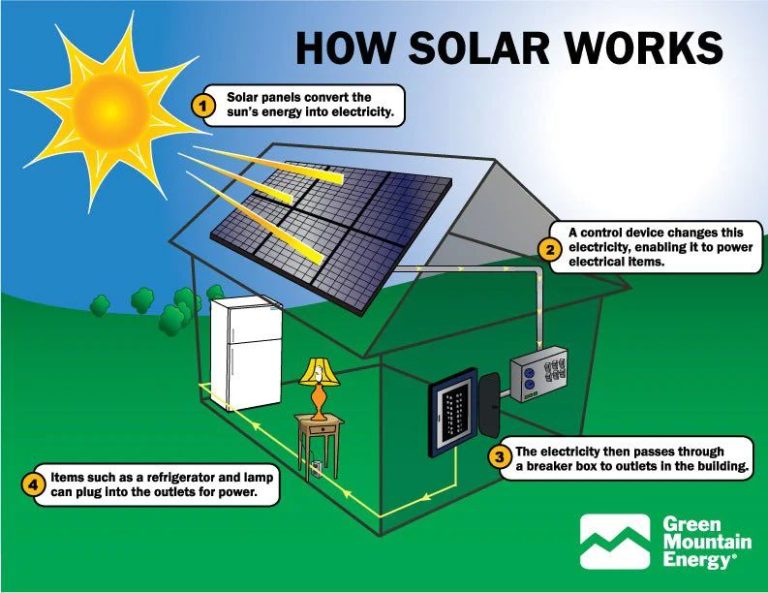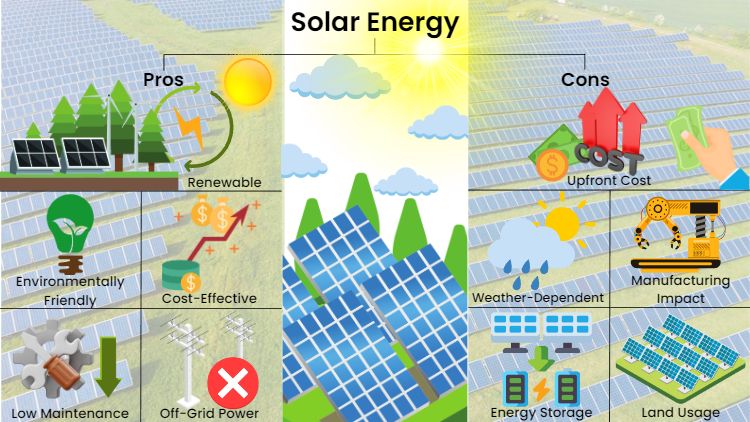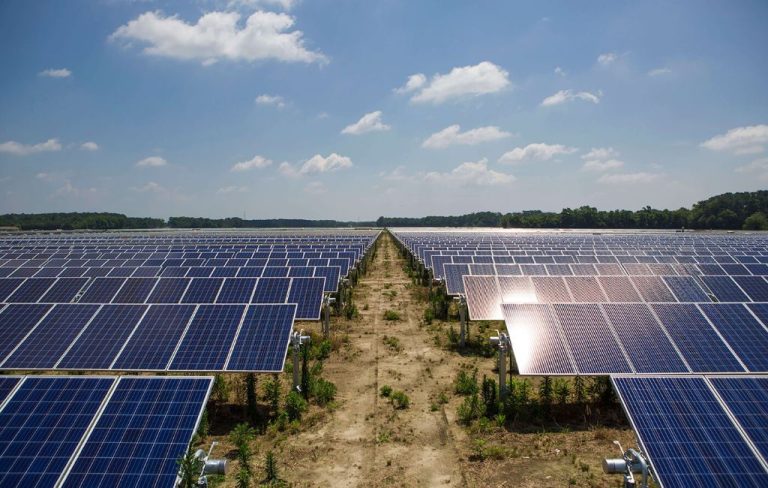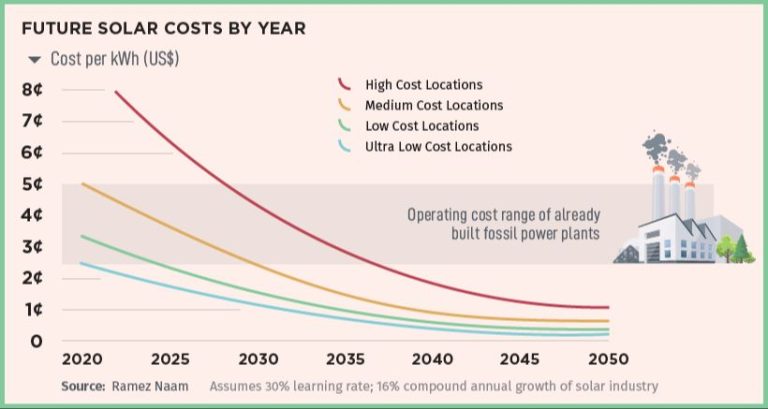What Energy Sources Come From Sun?
Solar Energy Overview
Solar energy is energy from the sun that is converted into thermal or electrical energy. Solar energy is the cleanest and most abundant renewable energy source available. Solar energy is considered renewable because the sun will continue to produce sunlight for billions of years. The development of solar energy could help reduce fossil fuel consumption, provide energy access, and mitigate climate change. There are several technologies that convert sunlight into useful forms of energy for electricity production, space and water heating, and other applications. Solar energy has become an important part of many countries’ plans to reduce greenhouse gas emissions and meet climate change goals.
Solar energy technologies include photovoltaics, concentrated solar power, solar heating and cooling, and artificial photosynthesis. Photovoltaics convert sunlight directly into electricity using solar cells made from semiconducting materials. Concentrated solar power uses mirrors to concentrate sunlight to drive traditional steam turbines or engines. Solar heating directly harnesses the sun’s thermal energy for water heating, space heating, and cooling. Artificial photosynthesis uses sunlight to split water into hydrogen and oxygen to produce renewable fuels.
Solar energy has the advantage of being widely available, renewable, clean, and producing no direct greenhouse gas emissions. However, it has limitations like intermittency, high upfront costs, and land use requirements. Ongoing research aims to lower costs and develop efficient energy storage solutions. With greater adoption, solar energy could play a major role in the global transition to sustainable energy.
Photovoltaic Solar Panels
Photovoltaic (PV) solar panels are one of the most common ways to harness energy from the sun. PV panels work by converting sunlight directly into electricity through the photovoltaic effect. When sunlight hits the semiconductor material in the PV cells, the energy frees electrons from their atomic bonds, allowing them to flow through the material and produce an electric current.
The most common material used in PV panels is silicon, which is abundant, non-toxic, and has a good sunlight to electricity conversion efficiency. Other materials like cadmium telluride and copper indium gallium selenide are also used. The PV cells are wired together and encapsulated behind a glass sheet to form a weatherproof panel.
PV panels have many applications, from small scale residential and commercial rooftop systems, to large utility-scale solar farms. Their modularity allows PV systems to be scaled up or down to meet different electricity needs. With no moving parts and minimal maintenance required, PV panels can have service lifetimes of 20-30 years, delivering clean renewable electricity from the power of the sun.
Concentrated Solar Power
Concentrated solar power (CSP), also known as concentrated solar thermal, generates electricity by using mirrors or lenses to concentrate sunlight onto a small area. The concentrated light is converted into heat, which drives a heat engine connected to an electrical power generator.
There are four main types of CSP technologies:
- Parabolic trough systems use curved, U-shaped reflectors to focus sunlight on a receiver pipe running along the reflector’s focal point. The heated fluid in the pipe is used to make steam to power a turbine.
- Power tower systems use a large field of flat, movable mirrors (heliostats) to focus sunlight onto a central receiver on top of a tower. The receiver contains a fluid that is heated to drive a turbine.
- Parabolic dish systems use dish-shaped reflectors that concentrate light onto a receiver at the focal point of the dish. The energy is converted directly into electricity by a generator or engine.
- Linear Fresnel reflector systems use long, thin segments of flat mirrors mounted on trackers to focus sunlight onto a fixed overhead receiver.
The main advantage of CSP compared to solar photovoltaics is the ability to readily incorporate cheap thermal energy storage, allowing CSP plants to store solar energy and produce electricity even when the sun is not shining.
Passive Solar Heating and Cooling
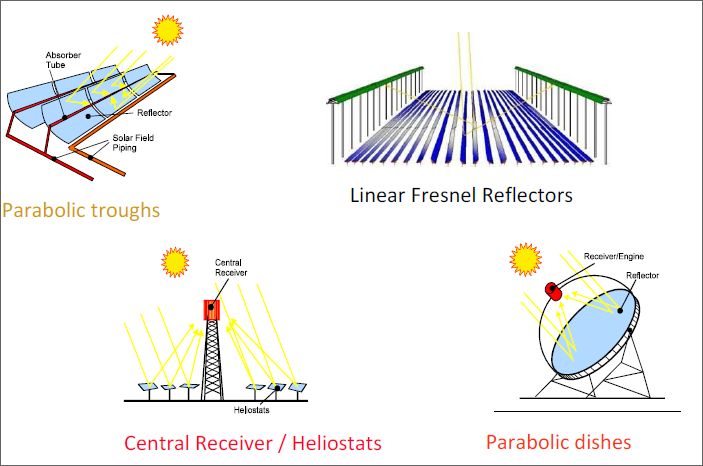
Passive solar heating and cooling refers to technologies that harness sunlight to heat, cool, and light buildings without the use of mechanical and electrical devices. Passive solar design takes advantage of natural energy flows to maintain a comfortable temperature inside.
The key aspect of passive solar design is the siting and orientation of a building to maximize solar gain. For heating, buildings are oriented with large south-facing windows to allow sunlight to enter and heat up thermal mass like concrete floors and walls. The thermal mass absorbs the heat during the day and releases it slowly at night when the temperature drops. Overhangs, reflective coatings, and selective glazing on windows prevent overheating in summer.
Passive cooling strategies like strategic shading, natural ventilation, and evaporative cooling utilize shade, wind, and water to cool buildings. Techniques like light-colored roofing, radiant barriers, and insulation help reduce heat gain. When designed properly, passive solar heating and cooling significantly reduce the need for mechanical heating and cooling.
Examples of passive solar design elements include south facing windows with overhangs, trombe walls to absorb and slowly release heat, skylights for natural lighting and ventilation, window glazing to minimize heat loss, and high-thermal mass building materials.
Solar Thermal Energy
One of the most common uses of solar energy is for solar thermal systems that collect heat from the sun. These systems use solar thermal collectors, usually mounted on rooftops, that absorb sunlight and convert it into heat. The most common application is solar water heating, where the heat from the sun is used to warm water in homes and businesses.
Solar thermal collectors come in a variety of forms like flat plates, evacuated tubes, and concentrating collectors. Flat plate collectors, the most common type, are boxes with glass covers that heat up when exposed to sunlight. Inside the boxes are dark absorber plates which are designed to efficiently transfer the heat into a liquid like water or antifreeze. For solar water heating systems, the heated liquid is then circulated through a heat exchanger that warms up water in an insulated storage tank.
Solar water heating provides an eco-friendly and renewable way to heat water for domestic, commercial, or industrial use. The technology is versatile and can be used for hotels, hospitals, apartment buildings, and single family homes. Solar thermal systems can provide over half of the hot water needs for many warm and sunny locations.
Some key benefits of solar water heating include reducing electricity or gas consumption, lowering energy bills, decreasing reliance on fossil fuels, and avoiding carbon emissions associated with hot water use. With proper installation and maintenance, solar thermal systems can provide decades of reliable hot water with a good return on investment.
Solar Fuels
Solar fuels refers to the process of using sunlight to create renewable fuels such as hydrogen. There are a few different methods for producing solar fuels:
Photoelectrochemical (PEC) water splitting uses a semiconductor material like titanium dioxide that absorbs sunlight. When the semiconductor is immersed in water and exposed to sunlight, it generates an electric current that splits water molecules into hydrogen and oxygen.
Photocatalytic water splitting is similar but uses a photosensitive catalyst along with the semiconductor. The catalyst speeds up the water splitting reaction.
Artificial photosynthesis replicates how plants use photosynthesis to convert sunlight into chemical energy. It uses sunlight, water, and carbon dioxide to create hydrocarbon fuels like methane, methanol, and syngas.
The great benefit of solar fuels is that they provide a way to store solar energy in the form of hydrogen or hydrocarbons that can be used anytime, not just when the sun is shining. However, the technologies are still in early research and development stages.
Advantages of Solar Energy
One of the biggest advantages of solar energy is that it is a renewable resource. Unlike fossil fuels which are finite and being depleted much faster than they are being created, the sun provides a constant, unlimited supply of energy that is not depleted by use. As long as the sun continues to shine, solar energy can be harnessed and utilized.
Generating electricity from solar energy produces significantly fewer greenhouse gas emissions than burning fossil fuels like coal or natural gas. Solar power is a clean energy source that can help reduce air and water pollution and environmental impacts caused by conventional energy production. Widespread adoption of solar energy could help address global climate change.
Transitioning to domestic solar power enhances energy security and independence. Relying on the sun’s rays eliminates foreign energy imports and exposure to volatile overseas energy markets. Solar technologies can be deployed almost anywhere, allowing most regions to take advantage of this local energy source. Energy independence provides greater control over electricity prices and supply.
Disadvantages of Solar
While solar energy has many benefits, it also comes with some downsides. Two key disadvantages of solar power are intermittency and high upfront costs.
Intermittency refers to the fact that solar energy production depends on sunlight, which varies throughout the day and year. Solar panels don’t generate electricity at night, and generate less on cloudy days. This intermittency makes it challenging to integrate large amounts of solar power into the electric grid. Energy storage solutions like batteries can help mitigate intermittency, but add to the costs.
The upfront cost of installing solar panels and associated equipment is quite high compared to fossil fuel power plants. Though solar pays for itself over time, the initial investment can deter some homeowners and businesses from going solar. Costs have come down significantly, but solar still requires financial incentives like tax credits to be cost competitive in many locations.
Solar farms can also require large amounts of land, particularly compared to other renewable sources like wind or geothermal. Finding suitable large plots of land with good solar resources is a key consideration for utility-scale solar projects.
Solar Energy Storage
One of the key challenges of solar energy is that it is an intermittent resource – the sun does not shine at night, and cloudy weather can reduce energy generation. Effective storage solutions are critical for enabling wider adoption of solar power. There are several promising storage technologies that can capture excess solar energy for later use.
Batteries
Rechargeable batteries are one of the most common ways to store solar energy. Batteries are charged during the day when solar panels are producing more energy than needed. The stored energy can then be used at night to meet electricity demand. Lithium-ion batteries have become the dominant battery technology for home solar systems due to their high efficiency and energy density. Utility-scale solar farms also increasingly incorporate massive battery banks to smooth out power delivery to the grid.
Thermal Storage
Thermal energy storage captures heat from the sun and stores it for later use. One approach is to use concentrated solar power systems with molten salt storage tanks. The salts are heated to high temperatures during the day, and then can boil water to drive a steam turbine at night. Thermal storage provides an effective way to dispatch solar energy when needed.
Hydrogen
Hydrogen produced via solar electrolysis provides another energy storage approach. Excess solar electricity can be used to split water into hydrogen and oxygen. The hydrogen can then be stored and later used in fuel cells to generate electricity. Hydrogen offers large-scale long-term storage, but requires significant infrastructure for production, storage and utilization.
Future of Solar
The future looks bright for solar energy. As technology continues to advance, solar is becoming increasingly efficient and cost-effective. Several innovations and trends will shape the future of solar technology.
Improving Efficiency: Researchers are finding new ways to make solar cells more efficient at converting sunlight into electricity. Some advanced solar panels on the market today have efficiencies of over 20%. Scientists are exploring nanotechnology, quantum dot cells, and hybrid systems to push efficiencies even higher.
New Technologies: Thin, flexible solar panels are becoming more practical and affordable. Perovskite solar cells made from cheaper materials promise high efficiencies. Concentrated solar farms use mirrors and lenses to generate more power from sunlight. Creative solar applications are being developed like solar windows, paints, and textiles.
Growth Projections: Solar energy is one of the fastest growing renewable sources. Total global solar capacity is forecast to reach up to 8,500 gigawatts by 2050, providing as much as 25% of global electricity demand. As technology improves and prices drop, solar adoption will continue to accelerate.
With climate change driving the transition to clean energy, solar power has a bright future ahead as a major renewable energy source worldwide.

